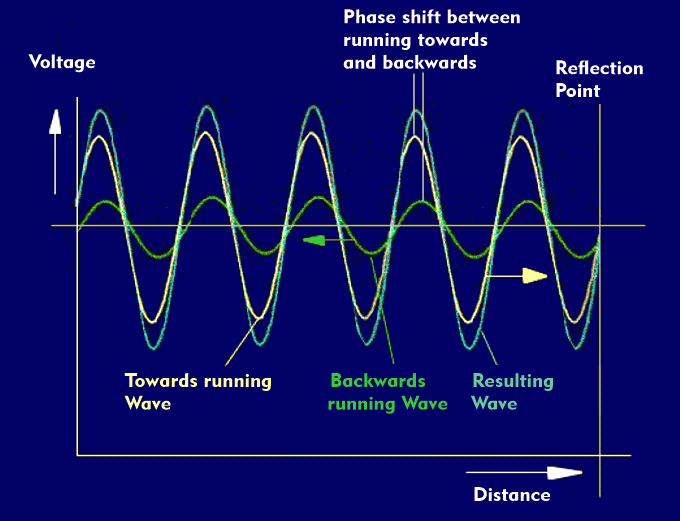standing wave
When waves are transmitted via a medium, reflections can occur. In the case of cables, reflections are caused by faulty impedances; in the case of sound, reflections are caused by reflective walls, ceilings and floors. In both cases, the reflected wave will be superimposed on the original wave and, depending on the phase position of the reflection, will stand in the medium as a wave with greater or lesser amplitude. Hence the term standing wave.
- In acoustics, a standing wave is created by the reflection of the original wave from walls or ceilings. Which particular frequency is reflected depends, among other things, on the speed of sound, the size of the resonance chamber, hall or living room. The wave reflected on the walls is superimposed on the original wave and, depending on the phase, can be higher in amplitude than the original wave.
- In the case of a cable, if the terminating impedance is incorrect, the outgoing wave is reflected at the end of the cable and travels back in the cable. The returning wave interferes with the outgoing wave with which it is superimposed. Depending on the phase position of the outgoing and return waves, both waves can add up to a larger one or subtract to a smaller one. As a result, wave crests and troughs form on the cable at regular intervals. The ratio of the outgoing to the returning wave is called the standing wave ratio.

